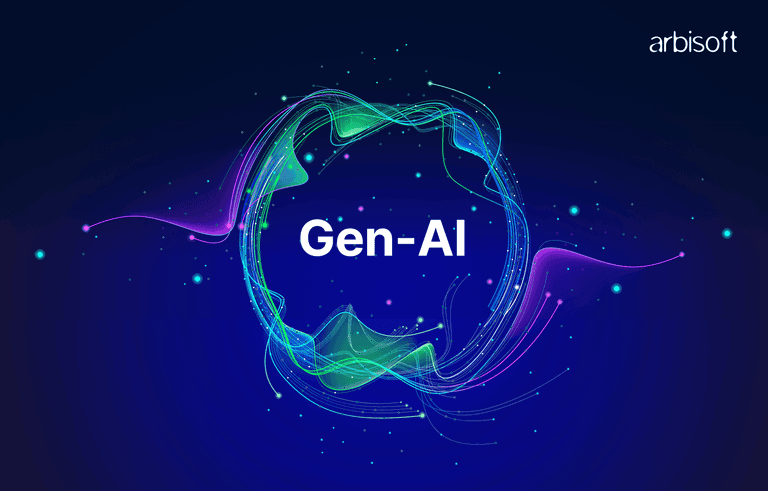We put excellence, value and quality above all - and it shows




A Technology Partnership That Goes Beyond Code

“Arbisoft has been my most trusted technology partner for now over 15 years. Arbisoft has very unique methods of recruiting and training, and the results demonstrate that. They have great teams, great positive attitudes and great communication.”
User Interface Design: A Software Engineering Perspective

User Interface (UI) design is not just about how software looks. It’s about how people use it, how they move through it, and how clearly it communicates with them. From a software engineering point of view, UI design must work with performance, logic, and system structure to create software that is not only attractive but also useful and reliable.
This blog explains UI design from a software engineer’s view. We’ll walk through what it means, why it matters, and how engineers can build better interfaces that users actually enjoy using.
Nail Your Next Frontend Interview
Download the Free UI Challenge Prep Guide!

Learn what to expect, how to structure your code, and what interviewers look for.

What Is UI Design in Software Engineering?
For engineers, UI design means making sure the interface works smoothly with the rest of the system. It must be fast, easy to update, easy to test, and ready to grow with the product.
Why UI Design Matters in Software Development
Many good software products fail because people find them hard to use. Even if the code is perfect, a poor interface can cause users to leave. That’s why UI design is a key part of building software. If you're designing for mobile, understanding UCD strategies for successful mobile app design becomes even more important, especially with millions of apps competing for user attention.
Here’s why it matters:
- It creates the first impression. A clear and simple interface encourages people to try the product.
- It helps users complete tasks. A well-designed UI reduces confusion and speeds up work.
- It lowers support costs. If users can figure things out on their own, they don’t need to ask for help.
- It increases usage and retention. People are more likely to keep using software that is easy to navigate.
- It makes updates easier. Clean UI code is easier to change when the product grows.
The Engineer’s Role in UI Design
UI design is not only the designer’s job. Engineers play a very important part in making sure the interface works well.
Here’s how engineers contribute:
1. Turning Designs Into Code
Engineers build the visual interface using code, HTML, CSS, JavaScript, or mobile tools like Swift, Kotlin, or Flutter.
2. Making the UI Fast
They ensure that pages load quickly and respond to user actions without delays.
3. Keeping the Interface Consistent
Engineers use shared components and design systems so that all parts of the interface look and behave the same.
4. Handling Problems Gracefully
They write code to manage situations like failed network calls, wrong inputs, or missing data without crashing the app.
5. Connecting UI to Data
Engineers link the UI to backend systems through APIs. They make sure data is shown correctly and updated in real time.
UI Design Principles for Software Engineers
Good UI design follows certain rules. These rules help engineers build interfaces that are simple, useful, and reliable.
1. Clarity
Everything on the screen should be easy to understand. Buttons should have clear labels. Icons should be familiar. The user should never have to guess what something means.
Icons should be familiar, and colors should support usability and visual harmony. If you’re unsure how to choose the right color combinations, check out our blog on Color Theory in UI Design: Choosing the Right Palette for Your App. The user should never have to guess what something means.
2. Feedback
The interface should tell the user what is happening. Show messages when actions are completed, errors occur, or data is loading.
3. Simplicity
Only show what is necessary. Too much information can confuse users. Keep the layout clean and focused.
4. Flexibility
The UI should work on all screen sizes and devices. It should also be easy to update or change when needed.
5. Error Prevention
Try to stop mistakes before they happen. If users do make mistakes, help them fix them easily.
Tools That Help Engineers Build Better UIs
Software engineers use many tools to create, test, and improve user interfaces. Some of the most useful ones include:
Tool | Use |
| Figma / Sketch | Used to view and understand design mockups |
| React / Vue / Angular | Used to build web interfaces |
| Tailwind / Bootstrap | Used to style and layout interface elements |
| Storybook | Used to test UI components in isolation |
| Lighthouse | Used to measure UI performance and accessibility |
| Cypress / Playwright | Used to automate UI testing |
These tools help engineers build and maintain high-quality user interfaces faster and more effectively. For teams looking to level up their interface design with user-first thinking, Arbisoft’s UX/UI Design Services offer expert guidance grounded in real user needs, motivations, and pain points, ensuring your product solves the right problems and delights users from the start.
How UI Design Fits Into the Software Process
In a real software project, UI design follows a step-by-step process. Engineers play a part in each step.
Step 1: Understand the Requirements
Know what the user needs to do and what the business wants to achieve.
Step 2: Review the Design
Look at the design mockups. Talk to designers. Identify any issues or limitations early.
Step 3: Build UI Components
Start coding small parts like buttons, forms, and cards. Use a consistent style and structure.
Step 4: Connect to Real Data
Fetch real data from the server and show it in the UI. Handle loading and error states.
Step 5: Test the UI
Test how the interface works on different devices and browsers. Make sure it’s fast and works without bugs.
Step 6: Collect Feedback and Improve
Observe users using the interface. Make changes to improve usability and fix confusing areas.
Common UI Challenges for Engineers
Building UIs is not always easy. Engineers often face these challenges:
1. Legacy Code
Old UI code can be hard to update. It’s important to keep the code clean and modular.
2. Frequent Design Changes
Design updates happen often. Engineers should write flexible code that’s easy to modify.
3. Accessibility
The UI must work for people with visual, motor, or cognitive disabilities. Engineers must follow accessibility standards.
4. Localization
If the app supports multiple languages, the UI must be ready for different text lengths and layouts.
How to Measure UI Quality
Good UI design can be measured with clear metrics. These numbers help engineers and teams understand what’s working and what’s not.
- Time to Interactive: How fast users can begin using the interface
- Click-through Rate: How often users take desired actions
- Error Rate: How many users make mistakes or fail to complete tasks
- Abandon Rate: How often users leave the page without finishing
- User Feedback: What users say about their experience
Why This Matters for Engineers
UI design is not separate from engineering. It’s deeply connected to how software works and how it is experienced by users. When engineers care about the user interface, the result is better performance, fewer bugs, faster development, and happier users.
For software engineers, learning UI design is not about becoming a designer. It’s about understanding how people use the things you build, and making sure those things are as clear, simple, and helpful as possible.
























